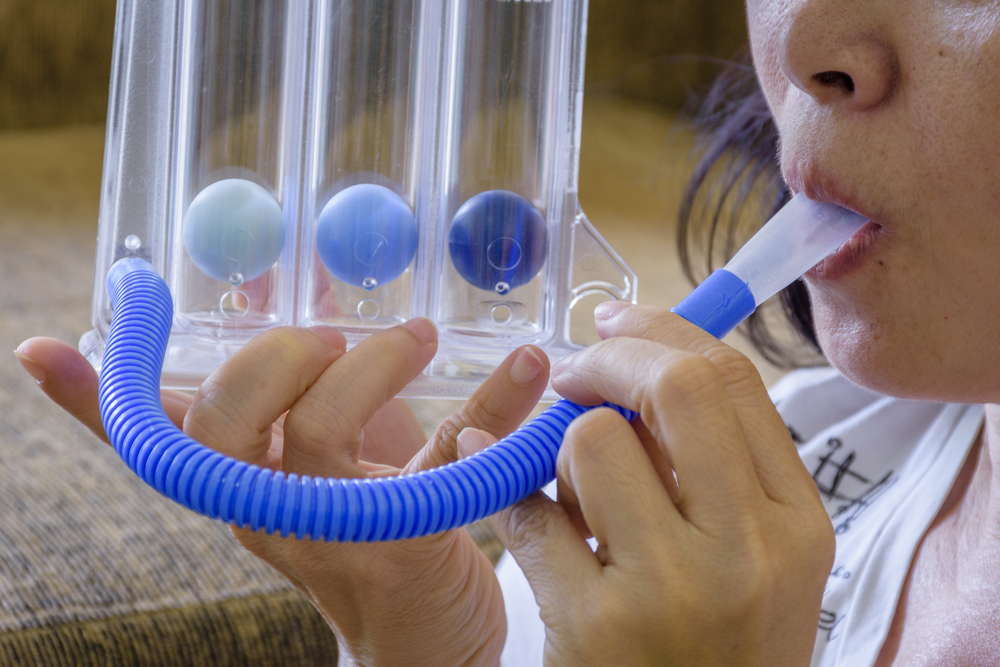Study Validates Optimal Lung Function Threshold for Identifying People at Risk for COPD
Written by |

Scientists have found data to support an optimal threshold for lung function that can accurately diagnose clinically significant airflow obstruction and chronic obstructive pulmonary disease (COPD).
Using information from adults across the U.S., researchers found that a 70% ratio of two spirometry indicators of lung function proved as good, or even better, than other used thresholds for predicting COPD-related hospitalizations and deaths.
The work, funded by the National Institutes of Health (NIH)’s National Heart, Lung, and Blood Institute, builds upon multiethnic studies, validates current guidelines from major respiratory societies, and contributes to identifying a fixed threshold of disease severity.
“A diagnosis of COPD needs confirmation by demonstrating obstruction to airflow using spirometry,” Surya Bhatt, MD, associate professor and medical director at the University of Alabama at Birmingham (UAB) and the study’s lead author, said in a UAB news release written by Adam Pope.
“The currently used criteria are based on expert opinion, and until these results were published, there was not enough evidence to support their use,” Bhatt added.
Doctors use spirometry tests, which measure the rate of air flow and estimate lung volume, to monitor lung function and evaluate the severity of lung disease. Several indicators can be taken from these tests, including how much air a person can exhale in the first second during a forced breath (FEV1, forced expiratory volume) or the full amount of air a person can exhale forcefully (FVC, forced vital capacity).
FEV1 and FVC values are usually proportional, and lower ratios are seen in individuals with obstructive lung diseases, such as asthma or COPD.
Major respiratory society guidelines recommend diagnosing airflow obstruction when the ratio of FEV1/FVC is lower than a fixed value of 0.70. This means that a healthy individual should breath out at least 70% of their lung volume, or vital capacity, in the first second during a forced exhalation followed by a maximal inhalation.
However, there is no rigorous, data-based evidence to support this threshold, which had been set by expert opinion.
“The selection of a threshold for defining airflow obstruction has major implications for patient care and public health, as the prevalence of the condition could vary by more than a third depending on the metric used,” Elizabeth C. Oelsner, MD, assistant professor at Columbia University and senior author of the study, said in a NIH release.
In the study, researchers aimed to determine how accurate several used thresholds were in predicting COPD outcomes.
They analyzed spirometry data and COPD-related clinical events in 24,207 adults of different ethnic backgrounds, pooled from four U.S. population-based studies: 54% were women, 69% were white, and 24% were black. The participants, from 45 to 102 years old, were enrolled from 1987 to 2000, and followed through 2016. Complete follow-up was available for 11, 077 participants (77%) at 15 years.
Results showed that the currently used FEV1/FVC ratio of 0.70 was the optimal fixed threshold to predict COPD-related hospitalization and mortality, and this was as good or even more accurate than other used thresholds, including the lower limit of normal, which draws normal values of lung function from reference populations.
“These results support the use of FEV1/FVC less than 0.70 to identify individuals at risk of clinically significant COPD,” the researchers wrote.
“The ongoing disagreement between experts on the best spirometry criteria to diagnose airflow obstruction has resulted in a lack of clarity for clinicians. Using a simple standard threshold has the potential to improve the diagnosis and treatment of this common disease,” Bhatt concluded.
Approximately 16 million Americans have COPD, but it is estimated that millions more have the disease but have not been diagnosed, according to the NIH.




